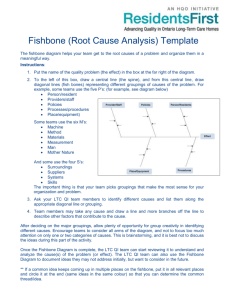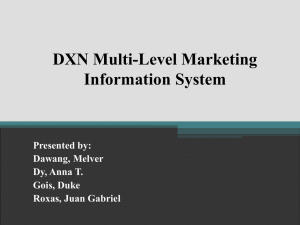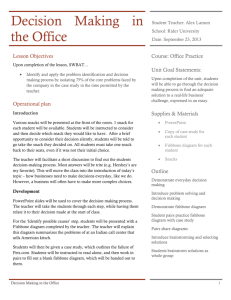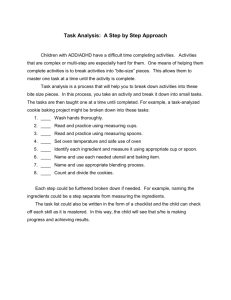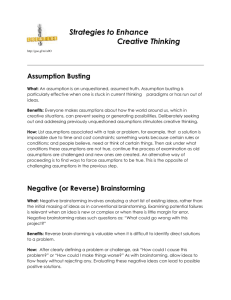fishhone diagram
advertisement
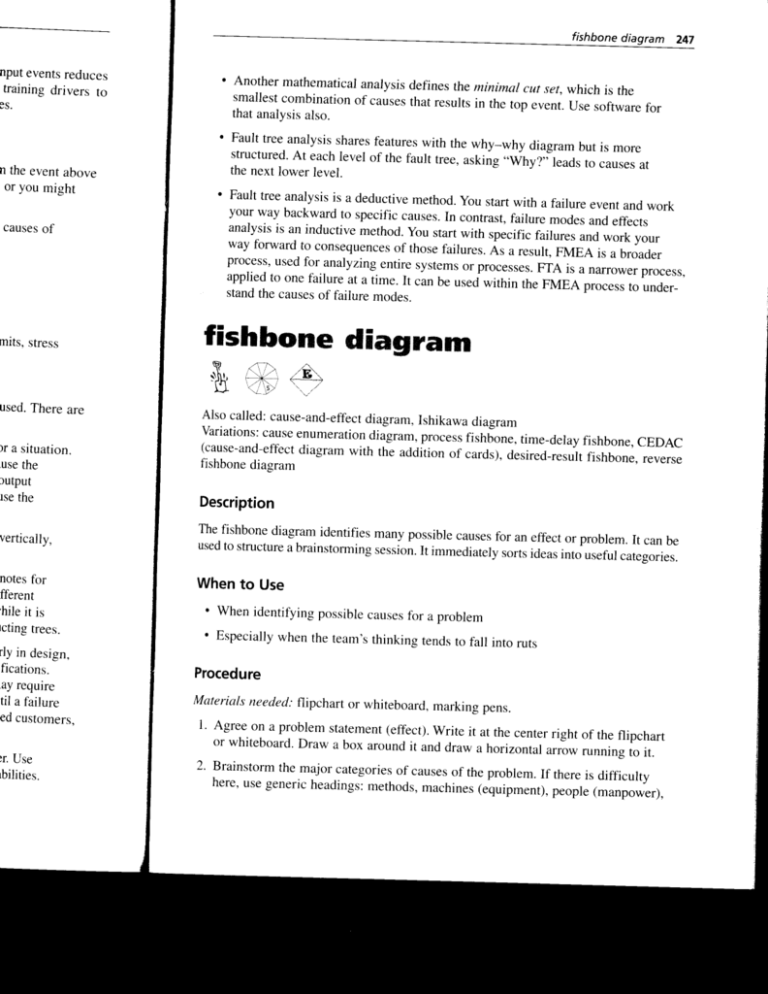
fishbone diagram
nputeventsreduces
training drivers to
3S.
n the eventabove
or you might
causesof
mlts,stress
247
' Another mathematical
analysisdefines theminimar cut set, which
is the
smallestcombinationof causesthat results
in the top "u"nr. Use softwarefor
that analysisalso.
' Fault tree analysisshares
featureswith the why-why diagram but is
more
structured.At eachlever of the fault tree, asking .,why?';leads
ro causesat
the nextlowerlevel.
' Fault tree analysisis
a deductivemethod.You start with a failure
eventand work
your way backwardto specific causes.In
contrast,failure modesand effects
analysisis an inductive method.you start with
specificfailuresand work your
way forward to consequences
of thosefailures.As a result,FMEA is a broader
process'usedfor anaryzingentire systems
or processes.
FTA is a narrowerprocess,
appliedto one failure at a time. It can be used
within the FMEA processto under_
standthe causesof failure modes.
fishhone diagram
r.A;
t'{}
-..L
used.There are
lr a srtuation.
usethe
)utput
rsethe
vertically,
notesfor
fferent
'hileit
is
rctingtrees.
rly in design,
fications.
ay require
til a failure
ed customers,
:r. Use
Lbilities.
t/
Also called: cause-and-effect
diagram,Ishikawa diagram
variations:causeenumerationdiagram,process
fishbone,time-delayfishbone,CEDAC
(cause-and-effect
diagram with the addition of cards),desired-result
fishbone,reverse
fishbonediagram
Description
Thefishbonediagramidentifiesmany possible
causesfor an effector problem.It can be
usedto structurea brainstotmingsession.It immediately
sortsideasinto usefulcategories.
When to Use
. When identifyingpossible
causesfor a problem
' Especiallywhen the
team'sthinking tendsto fall into ruts
Procedure
Materialsneeded:flipchart or whiteboard,
marking pens.
l' Agree on a problem statement(effect).write
it at the centerright of the flipchart
or whiteboard.Draw a box aroundit and draw
a horizontalarrow running to it.
2. Brainstormthe major categoriesof causes
of the problem.If thereis difficulty
here' use generic headings:methods,machines(equipment),
people(manpower),
248 fishbone diagram
categoriesof causesasbranches
materials,measurement,environment.write the
from the main arrow.
"Why doesthis
problem' Ask
3. Brainstormall the possiblecausesof the
it as a branchfrom the
happen?,,As eachid"a is given, the facilitator writes
placesif they relateto
appropriatecategory.caules can be written in several
severalcategories.
"Why doesthis happen?"about eachcause'Write subcauses
4. Ask again,
..Why?'' and generatedeeperlevels
branchingoff the causes.Continueto ask
of causes.Layers of branchesindicatecausalrelationships'
5.Whenthegrouprunsoutofideas,focusattentiontoplacesonthefishbone
where ideasare few.
Example
zz-400 manufacturingteamto fiyt0
Figure 5.59 is the fishbone diagramdrawn by the
This example is part of theZZ'
understandthe sourceof periodic iron contamination.
the six genericheadingsto prompt
400 improvement,tory in chapter 4. The team used
the causesof the problem'For
ideas.Layers of branc'hesshow thoroughthinking about
"Machines"' the idea "materials of construction"shows
example, under the heading
numbers'Someideasappeat
four kinds of equipmentanithen severalspecificmachine
"Methods,"
"calibration" showsup under
as a factorin theanain two different places.
"Measurement,"as a causeof lab error' "Iron t00ls"
lytical procedure,and also under
Measurement
Materials
Methods
Lab error
Inexpenenceo
analysl
Maintenance
E'"{'
Heat exchangerleqk
S"s
a - /
Environment
Manpower
F i g u r e5 . 5 9 F i s h b o ndei a g r a me x a m p l e
Machines
fishbone diagram
of causes
as branches
ty doesthis
branchfrom the
:sif theyrelateto
.esubcauses
ratedeeperlevels
rn thefishbone
249
"Methods" problemwhen taking samplesor a "Manpower" problem
canbe considereda
with maintenancepersonnel.
Also seethe St. Luke'sHospitalstoryon page72for anotherexampleof a fishbone
diagramusedwithin the improvementprocess.Seethe Medrad story on page 61 for an
exampleof a nontraditionalway to conduct a fishboneexercise.
cause enumeration diagram
Materialsneeded:sticky notesor cards,marking pens,large work surface(wall, table,
floor),flipchart paper.
l. Agree on the problem statement.
acturingteam to try to
tple is part of the ZZ'ic headings
to prompt
:s of theproblem.For
'construction"
shows
rs. Someideasappear
asa factorin the anaab error."Iron tools"
2. Brainstormall possiblecauses,using any brainstormingtechnique.(See
brainstorming andNGT.) Record on sticky notesor cards.Continueuntil the
group has run out of ideas.
3. Using an affinity diagram,group the causesand determineheadings.
4. Using the headingsas main causes,arrangethe ideason a fishbone drawn on
flipchart paper.
5. Use the fishbone to explore for additionalideas,especiallywhere there are few
ideason the fishbone.
process fishhone
Also called: productionprocessclassificationdiagram
Materials needed:flipchart paper,marking pens.
l. Identify the problem to be studied.Develop a flow diagram of the main steps
of the processin which the problem occurs.There shouldbe fewer than 10.
Draw them as a seriesof boxesrunning horizontally acrossa flipchart page,
with arrows connectingthe boxes.
*Y -
l
b%
n
e
-'X1
Out
'z;
+^
"-
2. Draw a separatefishbone for each step of the process.Takeeachone in turn and
brainstormcausesarising from each step.Also, considerthe handoff from one
stepto anotherand the causesof quality problemsthat occur there.
3. Continue to brainstormsubcauses,as in the first procedure.
Eryerlga!
q
time-delay fislthane
Materials needed:flipchart paper,marking pens,tape,large wall space.
L Begin a fishbone as in steps I and 2 of the main procedure.


